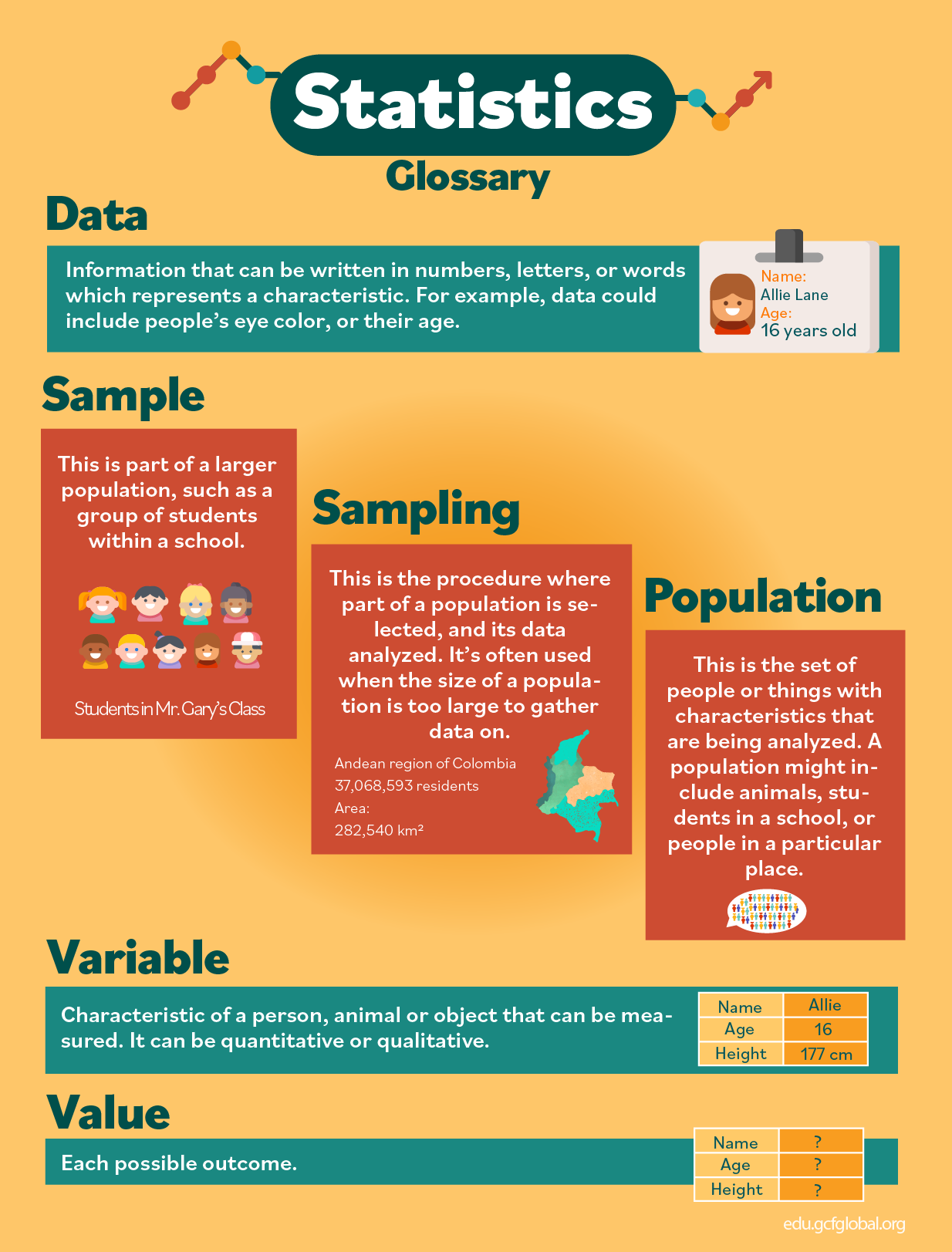Key Statistical Concepts
### Unit I: Key Statistical Concepts
#### A. **Grouping and Organizing Data**
Grouping and organizing data is the foundation of statistical analysis. It involves structuring raw data into a manageable format, making it easier to interpret and analyze.
- **Grouping**: This refers to the process of categorizing or classifying data into different groups or classes based on certain characteristics. For example, income levels can be grouped into categories such as low, middle, and high income.
- **Organizing Data**: Once grouped, data is arranged in a structured way to facilitate analysis. This can involve creating frequency tables, charts, or graphs.
#### B. **Univariate, Bivariate, and Multivariate Data and Frequency Distribution**
- **Univariate Data**: This refers to the analysis of a single variable. For example, analyzing the average income of individuals in a dataset is a univariate analysis.
- **Bivariate Data**: Involves the analysis of two variables to determine relationships or correlations. For example, studying the relationship between income and education level.
- **Multivariate Data**: Involves three or more variables, often to explore more complex relationships. For example, analyzing how income, education, and gender together impact employment status.
**Frequency Distribution**: A table that displays the frequency or count of observations for each value or category of a variable. This is often used in univariate analysis to summarize data, and can be visualized through histograms or bar charts.
#### C. **Cross-Sectional, Cohort, and Panel Data**
- **Cross-Sectional Data**: Data collected at a single point in time across various subjects. It provides a snapshot of a population at a specific moment. For example, a survey measuring people's opinions on social issues in 2023.
- **Cohort Data**: A type of longitudinal data where a specific group (cohort) is followed over a period. This is useful for examining how a particular characteristic or event influences a group of people over time. For instance, tracking the educational progress of a group of students who started school in the same year.
- **Panel Data**: Also longitudinal, but it involves repeated observations of the same subjects at multiple time points. It allows researchers to observe changes over time for the same individuals, making it useful for identifying trends.
#### D. **Summarizing Data: Measures of Central Tendency and Dispersion**
- **Measures of Central Tendency**:
- **Mean**: The average of all data points. It provides a general idea of the "central" value in a dataset.
- **Median**: The middle value when data is ordered from lowest to highest. It is particularly useful in skewed distributions.
- **Mode**: The most frequent value in a dataset. It is often used with categorical data.
- **Measures of Dispersion**:
- **Range**: The difference between the highest and lowest values. It provides a basic sense of variability.
- **Variance**: The average squared deviation from the mean, showing how much values differ from the mean.
- **Standard Deviation**: The square root of variance, providing a measure of spread in the same units as the data. It indicates how much the data varies from the mean.
---
### **Readings** for this Unit:
- **Mueller, John H. and Karl F. Schuessler (1969)**, *Statistical Reasoning in Sociology*, New Delhi: Oxford and IBH. (Chapters 3, pp. 29-78): This reading focuses on the foundations of statistical reasoning and methods of summarizing sociological data.
- **Levin and Fox**, *Elementary Statistics in Social Research*: Chapter 2 (Grouping and organizing data), Chapter 3 (Univariate, bivariate, and multivariate data), and Chapter 4 (Summarizing data with central tendency and dispersion measures).
- **T.L. Baker**, *Doing Social Research*: Levels of measurement (pp. 119-125) and cross-sectional or longitudinal study designs (pp. 91-95).
These readings will provide you with theoretical and practical knowledge about key statistical concepts in sociological research. Let me know if you want more detailed explanations or summaries of any specific readings!






